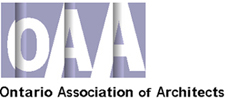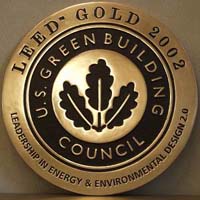
A
Joint Project by the: |
||
 |
||
| Advanced
Case Studies in Canadian Sustainable Design |
Terri
Meyer Boake B.E.S. B.Arch. M.Arch. |
|
| LEED as a Tool to Assess "Success": | |
 |
But how do we judge the relative success or non success of sustainable buildings? We need a uniform basis to prepare case studies, categorize methods and compare buildings. It was decided to use the LEED rating system ("Leadership in Energy and Environmental Design") as a comparative tool to assess the level of "sustainability" achieved by the respective buildings. The students, in this process, also carried out a preliminary evaluation of the LEED system as a method of environmental building assessment. It was concluded that LEED, in its numeric favouring of brownfield developments and projects accessible by public transit, was very hard on a number of the case studies whose function as environmental learning centres precluded urban siting. The LEED "label", however, was felt to be a worthwhile motivational tool and should be adopted by Canadian agencies and cities as an achievable and recognizable goal for new buildings across Canada. The adoption of LEED in a number of cities thus far has proven to be a successful means of promoting a green ethic in new development. More information
on the LEED assessment tool can be obtained at www.usgbc.org
and by referring to the Information on the proposed revision Canadian version of LEED can be found at the Canadian Green Building Council website www.cagbc.ca and by downloading the Canadian brief (1.8 MB). In researching and preparing their case studies, the students used LEED criteria as the basis for the organization of their material. Whether or not a project used LEED, or predated the introduction of LEED as an evaluation system, the building was subjected to a LEED analysis by the student researcher. The preliminary findings of that research can be viewed by following the link below. The chart is a Microsoft Excel spreadsheet, in .xls format.
LEED: A Primer: The Canadian Architect Magazine, the January 2004 Sustainability issue, explaining the basic principles of the LEED Assessment System. link LEED as
an Analysis Tool: A
paper that was presented as part of the Solar Energy Society of Canada
Conference (SESCI),
2004, at the University of Waterloo address the ability to use the LEED
tool as a means to analyze and compare buildings. Building comparison
is part of the LEED mandate. link
to paper
Additional References/Tools for Green Building Analysis: Green Globes Building Assessment Tool: Extrapolation of LEED: The Green Guide for Healthcare Greening the Office: The LEED Guide to the Use of Wood: (10.1MB) link |
![]()
| Key Links: | |
Canadian Green
Building Organization |
www.cagbc.ca |
![]()
last updated September 5, 2005